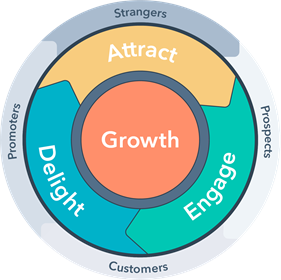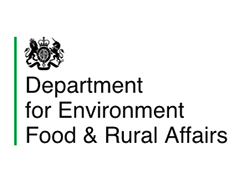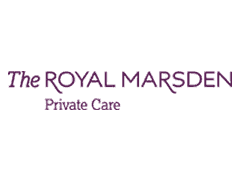With each marketing strategy needing to be tailored to both the campaign and organisation, the inbound methodology is the perfect plan which allows for the adaptation of your marketing needs while mainstreaming your campaigns to one clear goal – Building impactful and lasting relationships.
The inbound methodology is a journey; it is the process your audiences go through to become consumers and active brand promoters of yourselves or products. However, while the outcome is ideal, it takes dedication, time and a lot of marketing collateral to achieve.
We’ve used the inbound method for our clients for years and have seen the benefits it reaps, time and time again. In this article, we’re going to take you through the inbound process, giving you neat tips and directing you to excellent case studies for how we achieved success for our clients.
Inbound Flywheel
 We’re proud to be a HubSpot Gold Partner Agency, which is one of the world’s leading marketing, sales and service platforms. We find that the inbound Flywheel is a logical and structured approach to achieving a successful inbound marketing campaign.
We’re proud to be a HubSpot Gold Partner Agency, which is one of the world’s leading marketing, sales and service platforms. We find that the inbound Flywheel is a logical and structured approach to achieving a successful inbound marketing campaign.
With 3 key steps:
- Attract
- Engage
- Delight
The Flywheel demonstrates the endless cycle of the methodology and momentum gained when an organisation aligns its marketing efforts to deliver excellent customer experiences.
Through focusing on customer experience, you will create a positive emotional reaction for the brand, reinforcing a positive image to the customer’s network, encouraging referrals and repeated sales.
At its core, the approach comes to a simple notion, to attract an audience, proactively engage with them on their terms and delight them into becoming a satisfied consumer. These three stages should work seamlessly together, creating a force that keeps the wheel spinning.
Anything which reduces the force and slows down the inbound process, such as confusing product communications and long lead times, will cause friction and slow down the wheel. It could bring the process to a complete halt for the customer.
The more friction you have, the more the wheel slows down. If the wheel does stop, it not only damages the relationship between yourself and the lead but could also negatively impact the relationship between your company and its network.
Alternatively, the more force you have pushing the wheel around, the higher your customer satisfaction and the faster you bring in leads.
Attract
For the initial stage, Attract, the aim is to provide the right piece of content for the audience into coming to your site. At this stage, you need to eliminate ‘friction’ barriers that audiences and traffic may face to ease how they can learn about your brand and company.
Tip – Always earn people’s attention through interesting and helpful content that they can use. If the benefits of the content are forced – audiences will not be attracted! At this stage you may want to implement:
- Paid Advertising
- Content Marketing
- Social Media Marketing
- Search Engine Optimisation
Treat your attract strategy as a process; you will need to create high-quality content, including blog articles and content offerings.
Tip – Through focusing on quality and not quantity, you can provide high-value content that attracts your audience.
Once you have successfully established high-value content, you can begin enhancing your marketing efforts with more depth using paid advertising, social media and search engine optimisation to expand your content’s reach.
Engage
The next phase of the inbound methodology, engage, is about building a long-term relationship. With the customer at the centre of this approach, you need to be focused on reaching them and cultivating a positive relationship instead of transforming your attracted audience into one-time buyers.
When engaging, it is vital to think about your lead’s process and make it easier to engage them on their own time and preferred channel. The strategies we often use include:
- Personalising content and communications (Emails etc)
- Database segmentation
- Marketing automation
- Lead nurturing
- Multichannel communication
- Sales automation
Tip – During the engagement process, if you personalise your communications and content, you achieve a more human and relatable marketing approach.
In your engagement, try to sell a solution to a relatable problem rather than selling the product. In both B2B and B2C, you will have similar experiences with your audiences, and you can use that to your advantage! Demonstrate how the problem can be overcome by using the solution you are offering.
We often further achieve this by segmenting our database. In analysing the responses and engagement with content such as emails, we segment our database accordingly to deliver personalized content that can help them progress through the buyer’s journey stages.
During the engaging stage, we see the transition of prospects into customers of your product and services.
Performing successfully in the engagement stage is key to keeping the inbound wheel spinning; in attracting an audience yet not engaging with them, you are placing too much reliance on the content you published for the attract stage.
Operating in a digital age, you still need to use the techniques used in real-life. The products can only sell themselves so far, so it is essential to keep the prospects engaged and not go elsewhere.
Delight
Within the delight stage of the methodology, we expect our marketing efforts to be helping in the support and empowerment of customers in reaching their goals using the marketed products and services.
In doing so, you ensure your customer is satisfied and supported even after they have made their purchase. Some strategies may include:
- Proactive customer service
- Tutorials
- Ticketing systems
- Automated onboarding
- Loyalty programmes
- Chatbots
- Personalised tutorials
- Social media listening
While not all of these strategies will be applicable, it will involve an adapted approach. Some of these are essential for any business; Social Media Listening, for example, can help indirectly monitor your brands standing and reputation with audiences.
It involves monitoring how customers are talking about your brand, giving you a chance to respond to positive and if any, negative feedback.
Tip – Ensure you assist and support your customers at all times, even if you get no profitable value from it at that stage.
In successfully delighting your customers, you can transition them into advocates and promotors; they will go on to discuss the positive outcomes they had with yourselves and drum up organic (and free!) marketing.
In the delight stage, the extent of how successful the methodology comes into force. If successful, the wheel continues to spin and will produce new leads through customer promotion.
If unsuccessful, it could potentially have adverse effects (friction) with the negative promotion of your brand by dissatisfied customers.
The team at ExtraDigital are professional experts with the inbound methodology, using it for clients almost every day. With a range of inbound packages, we can offer a tailored approach to suit your business needs. Contact us today to discuss how our expert teams can help.










